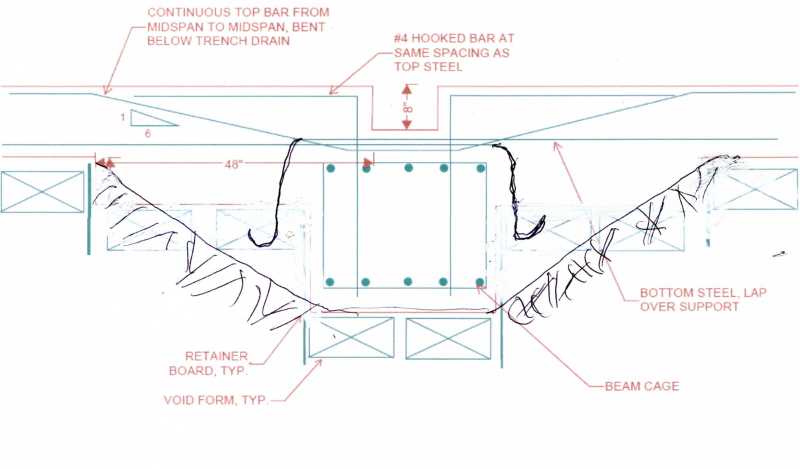I have a foundation on void forms that is a one-way slab system, rated for HS-20 loading. There are grade beams supporting the slab that coincide with 8" deep trench drains running parallel to and centered on the beam line. In order to keep slab continuity, I am bending the top slab steel down below the drain at a 1:6 slope and deepening the slab under the bent portion the same depth of the drain. I am also providing hooked dowels at the lower bend to resist the uplift force created by the offset of the steel. I have attached a detail showing what I am describing. I chose to step the bottom of the slab instead of sloping it because a rep once informed my that the system works better with stepping it, but I'm not sure if I need to include any additional steel in the dropped portion since it should always be in compression. I have attached detail of what I am showing, if anyone could take a look at it and let me know if I am missing or overlooking something that would be great.
Tek-Tips is the largest IT community on the Internet today!
Members share and learn making Tek-Tips Forums the best source of peer-reviewed technical information on the Internet!
-
Congratulations MintJulep on being selected by the Eng-Tips community for having the most helpful posts in the forums last week. Way to Go!
Trench drain over grade beam.
- Thread starter txeng91
- Start date

